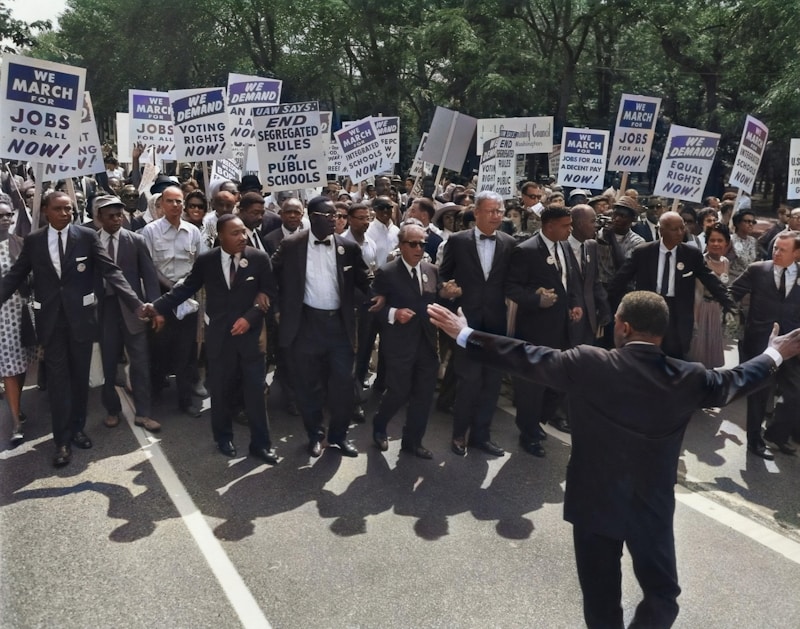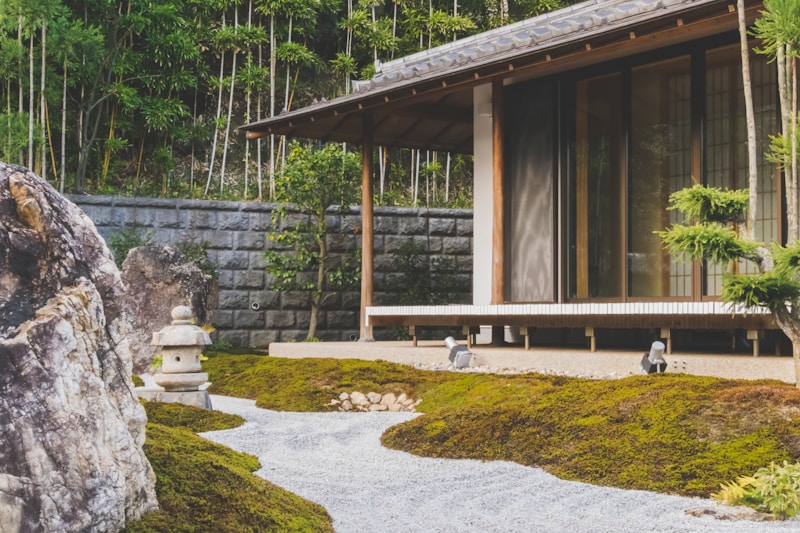9 Questions
During which period did Japan experience economic prosperity, population growth, and the development of various art forms?
Who established the practice of cloistered rule during the Heian period?
What was the primary cause of the downfall of the Kamakura shogunate?
What led to the fall of the Tokugawa shogunate?
Which war did Japan win, leading to its annexation of Korea?
What was the main goal of Toyotomi Hideyoshi?
What was the sakoku policy implemented during the Edo period?
Which event marked the end of the Tokugawa shogunate and the restoration of the emperor as the nominal supreme power?
What led to Japan's surrender in World War II?
Summary
Overview of Japanese History
- Japan's human inhabitants have been traced back to prehistoric times around 30,000 BC.
- The Jōmon period, named after its cord-marked pottery, was followed by the Yayoi period in the first millennium BC.
- The Yayoi people from the continent immigrated to the Japanese archipelago and introduced iron technology and agricultural civilization.
- Japan's many kingdoms and tribes gradually came to be unified under a centralized government between the 4th to 9th century.
- Over time, power shifted from the imperial house to great clans of civilian aristocrats and then to military clans and their armies of samurai.
- The Tokugawa shogunate governed from Edo (modern Tokyo) and presided over a prosperous and peaceful era known as the Edo period (1600–1868).
- Portugal and Japan came into contact in 1543, introducing firearms to Japanese warfare.
- The American Perry Expedition in 1853–54 ended Japan's seclusion and contributed to the fall of the shogunate.
- The new national leadership of the Meiji period transformed Japan into an empire that closely followed Western models and became a great power.
- Japan's powerful military had great autonomy and overruled Japan's civilian leaders in the 1920s and 1930s.
- Japan's attack on Pearl Harbor in 1941 led to war with the United States and its allies.
- Japan surrendered on August 15, 1945, following the atomic bombings of Hiroshima and Nagasaki and the Soviet invasion of Manchuria.
- After the occupation by the Allies until 1952, Japan enjoyed high economic growth under the governance of the Liberal Democratic Party but has experienced slowed growth since the 1990s.Overview of Japanese History: From Heian to Muromachi Periods
Heian Period:
- The Heian period (794-1185 CE) was a time of great cultural and artistic achievements in Japan.
- The Fujiwara clan rose to power and established the practice of cloistered rule, with retired emperors holding the real authority.
- The nationalization of land decayed as noble families and religious orders secured tax-exempt status for their private shōen manors, leading to the decline of the imperial court's power.
- Two powerful noble families, the Taira and Minamoto clans, acquired large armies and many shōen outside the capital, leading to the rise of samurai warriors.
- The imperial court successfully consolidated its control over the Emishi people of northern Honshu.
- The imperial court's literary accomplishments include Kokinshū, The Pillow Book, and Tale of Genji.
Kamakura Period:
- The Kamakura period (1185-1333 CE) started with the rise of Minamoto no Yoritomo, who established the bakufu (tent government).
- Legitimacy was conferred on the shogunate by the imperial court, but the shogunate was the de facto rulers of the country.
- The regime was decentralized and feudalistic in structure, with provincial governors selected from among Yoritomo's close vassals, the gokenin.
- The samurai armies of the whole nation were mobilized in 1274 and 1281 to confront two full-scale invasions launched by Kublai Khan of the Mongol Empire.
- Discontent among the samurai class proved decisive in ending the Kamakura shogunate in 1333.
Muromachi Period:
-
The Muromachi period (1333-1568 CE) started with the Ashikaga shogunate, which was faced with the twin challenges of fighting the Northern Court and of maintaining its authority over its own subordinate governors.
-
The shogunate appointed its allies to rule in the provinces, but these men increasingly styled themselves as feudal lords of their domains and often refused to obey the shogun.
-
The country descended into another, more violent period of civil war during the final century of the Ashikaga shogunate, called the Warring States period.
-
European traders introduced many new items to Japan, most importantly the musket, and Christianity soon came to have a substantial following in Japan.
-
The civil war status in Japan greatly benefited the Portuguese, who were allowed to trade and create colonies where they could convert new believers into the Christian religion.Overview of Japanese History from Muromachi Period to the Fall of the Shogunate
-
During the Muromachi period, Japan experienced economic prosperity, population growth, and the development of various art forms.
-
The Azuchi-Momoyama period was characterized by the reunification of Japan under two powerful warlords, Oda Nobunaga and Toyotomi Hideyoshi.
-
Nobunaga was renowned for his strategic leadership and ruthlessness, while Hideyoshi completed the reunification of Japan and launched sweeping changes to Japanese society.
-
Hideyoshi's dream of conquering China led to two failed invasions of Korea, and after his death, war broke out between his allies and those loyal to Tokugawa Ieyasu.
-
Ieyasu won a decisive victory at the Battle of Sekigahara, ushering in the Tokugawa shogunate and the Edo period.
-
The Edo period was characterized by relative peace and stability, with the shogunate exerting tight control over the country from Edo (modern Tokyo).
-
The shogunate went to great lengths to suppress social unrest and implemented the sakoku policy to isolate Japan from the rest of the world.
-
During the Edo period, Japan's population doubled, and increased literacy and numeracy drove a flourishing commercial publishing industry.
-
The Edo period was also a time of cultural flourishing, with new forms of entertainment such as kabuki and bunraku puppet theater becoming popular.
-
The shogunate showed signs of weakening in the late eighteenth and early nineteenth centuries, with peasant unrest growing and government revenues falling.
-
The arrival of a fleet of American ships commanded by Commodore Matthew C. Perry in 1853 led to the shogunate's downfall and the end of Japan's isolationist policies.Modern Japan: From the Meiji Restoration to World War II
-
The Meiji Restoration in 1868 marked the end of the Tokugawa shogunate and the restoration of the emperor as the nominal supreme power.
-
The Meiji oligarchs, former samurai from Chōshū and Satsuma, oversaw Japan's transformation into a modern nation-state, promoting Westernization and widespread reforms.
-
The Meiji government abolished the Edo class structure, replaced feudal domains with prefectures, and introduced comprehensive tax reform, railways, telegraph lines, and a universal education system.
-
The military played a key role in Japan's expansion abroad, with its victory over China in the First Sino-Japanese War and its later annexation of Korea.
-
Economic modernization led to the rise of family-owned conglomerates called zaibatsu, rapid urbanization, and growing labor unrest.
-
The Taishō period saw the expansion of democratic institutions, universal male suffrage, and Japan's participation in World War I.
-
The rise of extreme nationalism and right-wing groups, including the Kwantung Army, led to the Manchurian Incident, the Second Sino-Japanese War, and Japan's expansionist vision.
-
Japan's attack on Pearl Harbor brought the US into World War II, and Japan successfully invaded Asian colonies of the US, UK, and the Netherlands.
-
The tide began to turn against Japan following the Battle of Midway and the subsequent Battle of Guadalcanal, and life in Japan became increasingly difficult for civilians due to rationing and a brutal crackdown on dissent.
-
Widespread bombing raids on the Japanese mainland destroyed over half of the total area of Japan's major cities.
-
The Battle of Okinawa was the largest naval operation of the war and left 115,000 soldiers and 150,000 Okinawan civilians dead.
-
Japan's surrender in 1945 marked the end of World War II and the beginning of Japan's occupation by foreign powers.
-
Emperor Hirohito's role in Japan's foreign wars remains a subject of controversy among historians.
Description
Test your knowledge of Japanese history with this comprehensive quiz! From the prehistoric Jōmon period to the fall of the Tokugawa shogunate and Japan's transformation into a modern nation-state, this quiz covers it all. Learn about the rise and fall of powerful clans, the Meiji restoration, Japan's expansion abroad, and the impact of World War II on the country. Put your knowledge to the test and see how much you really know about Japan's fascinating history!


